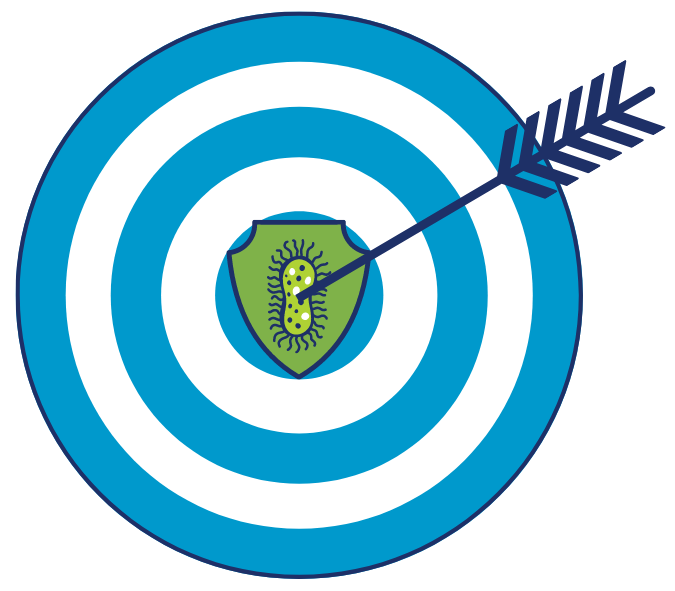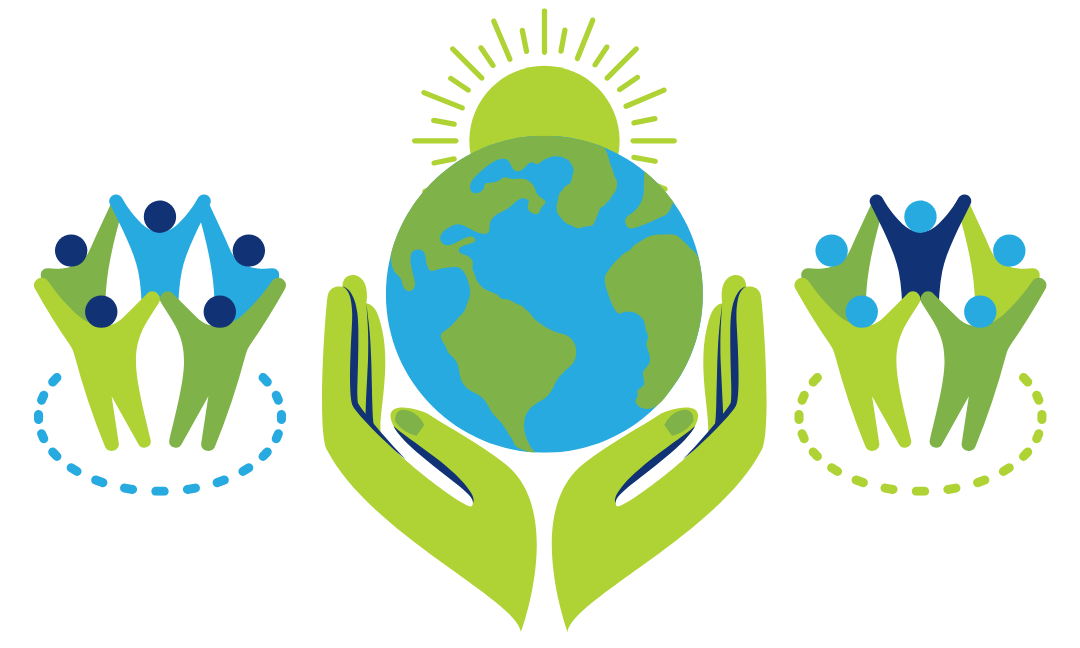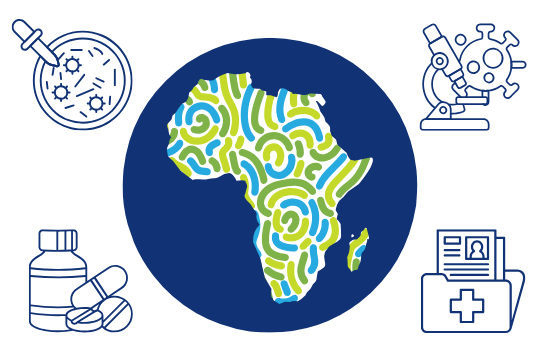
The problem of antimicrobial resistance – AMR for short – is clear. More and more of these germs resistant to existing treatments are emerging everywhere, and there’s little disagreement that governments, nonprofits, doctors, patients, and politicians all need to help tackle the problem.
But people need to agree on what to do, and they need to agree on how to measure progress.
That’s where targets come in.
Aislinn Cook, a senior research fellow in infectious disease epidemiology on the antimicrobial resistance team in the Centre for Neonatal and Pediatric Infection of St. George’s University in London, is helping set some of those targets. Cook, who’s also affiliated with the Health Economics Research Centre at the University of Oxford, has helped write a series of papers in the Lancet medical journal bringing attention to the problem of antimicrobial resistance. AMR is a big topic of international discussion in 2024, due in part to it being one of the topics of the United Nations High-Level Meeting, and the Lancet series was put together to help focus that discussion.
Cook’s paper proposes some clear targets to reach by 2030: a 10 percent reduction in mortality from drug-resistant infections; a 20 percent reduction in inappropriate human antibiotic use; and a 30 percent reduction in inappropriate animal antibiotic use.
These goals should be achievable, Cook says. Listen as she tells One World, One Health about some concrete ways the world can work together to control the spread of drug-resistant germs.
Learn more about the struggle to control drug-resistant bacteria, viruses, and fungi in some of our other episodes. We’ve spoken with experts about how vaccines can help prevent the spread of drug-resistant germs, about tracking superbugs in sewage, and the surprising rise of drug-resistant fungi. Experts in drug design have talked to us about the search for new and better antibiotics and how these little organisms are winning an arms race against us. Filmmakers have told us about how storytelling can help people understand the threat while global health specialists explained that good stewardship can keep the antibiotics we have working as they should. We’ve even investigated superbug mysteries, like the case of the killer eyedrops.
Maggie Fox 00:00
Hello and welcome to One World, One Health where we take a look at some of the biggest problems facing our world. I’m Maggie Fox. This podcast is brought to you by the One Health Trust with bite-sized insights into ways to help address challenges, such as infectious diseases, climate change, and pollution. We take a One Health approach that recognizes that everything on this planet — the animals, plants, and people, and the climate and environment — are all linked.
One perfect example of these links is the problem of antimicrobial resistance or AMR. This happens when bacteria, viruses, or fungi that infect people can withstand the treatments we have developed for them. This drug resistance can mean an infection that was once cured with a shot or a couple of pills, is now much more difficult to fix. Sometimes infections become completely impossible to cure. Drug-resistant infections directly kill more than a million people every year, and they help kill about 5 million people a year. It’s such a big problem that the United Nations and other major organizations have focused on it throughout 2024.
To help set the stage for these international discussions, The Lancet medical journal commissioned a series of papers led in part by the One Health Trust. Aislinn Cook of St. George’s University of London, and the Health Economics Research Center at the University of Oxford, helped put together one of these papers. It proposes some targets that can be used to plan out the fight against these drug-resistant infections and to measure progress. She’s joining us today to talk about these targets.
Aislinn, Thanks so much for joining us.
Aislinn Cook 01:45
Thank you for having me, Maggie.
Maggie Fox 01:48
Aislinn, you propose some targets for reducing these growing rates of drug resistance. Can you tell us why targets like these are useful?
Aislinn Cook 01:57
Yeah, so as we talked about in the paper, there was a United Nations General Assembly (UNGA) meeting in 2015-2016 that started to talk about meeting to address this (AMR). A lot of that came without targets. We currently have one target that is 60% of antibiotic use should be accessed and thinking about targets, is a way to bring political will, accountability, and funding.
So, by aiming for something, you can hope that countries and United Nations (UN) bodies start to get behind (the idea), like “we need to fund this, to measure this” and make a difference. They (targets) also allow you to see how well you’ve progressed. Ideally, we are reducing drug resistance or antibiotic use. So, we need to know what we’re aiming for. Hopefully, we can update the targets as we improve.
Maggie Fox 02:40
Who are the targets for?
Aislinn Cook 02:41
So right now, the targets are aimed at the UN level and the country level and getting some global will behind meetings to address this problem.
We’ve talked about targets related to reducing AMR mortality, reducing inappropriate antibiotic use in humans, and reducing inappropriate antibiotic use in the animal sector. So, it’s aimed at people, not just healthcare professionals, not just microbiologists, but looking at the whole One Health sphere, as well as trying to get global action behind this in that way.
Maggie Fox 03:12
Can you tell us about the targets that you propose?
Aislinn Cook 03:16
Yep, we propose three targets termed the 10-20-30 by 2030. The first one being aiming for a 10 percent reduction in mortality from AMR, the second being a 20 percent reduction in inappropriate human antibiotic use and the third being a 30 percent reduction in animal antibiotic use and aiming to do all this by 2030.
Thinking about reducing antibiotic use, which two of these targets aim to look at- we’ve been specific to talking about reducing inappropriate use; we don’t want patients and animals who need treatment to not have access to it.
So, the big thing here is we know that both patients and animals are prescribed (antibiotics), and we use antibiotics in animals somewhat inappropriately. And we (also) know that humans are probably prescribed antibiotics that they don’t necessarily need, particularly in primary care, like coughs and other things (symptoms). So, the aim is to use the tools and clinical guidelines that we have, to reduce inappropriate antibiotic use.
The other way that we can do this, which can also lead to a 10% reduction in mortality and AMR, is to use other tools that aren’t just around prescribing patterns, but to start using vaccines that cover lots of different illnesses.
So viral vaccines and bacterial vaccines, such as pneumonia vaccine, and rotavirus vaccine, can reduce symptoms and mortality. That might lead to less prescribing, reduced severe outcomes, and improved sanitation, infection prevention, and control. The biggest thing is that if you don’t get an infection, you don’t get an antibiotic and you also can’t die from a resistant infection. We are looking to make sure that this is safe for people while we also aim to reduce the impact of these infections and act towards reducing AMR.
Maggie Fox 04:53
Why such seemingly modest goals? A 10 percent reduction in mortality, a 20 percent reduction in inappropriate use, and a 30 percent reduction in inappropriate animal use? Why not just go for the whole thing and abolish all drug resistance?
Aislinn Cook 05:12
I think it’s a bit more complicated than that. I think you’ve had a lot of different people on here (One World, One Health podcast) talking about how you get drug resistance, and antibiotics are a piece of that. We know that overuse of antibiotics drives drug resistance. But we also know that all these bugs mix in the environment and the way that effluent comes in wastewater or other things that drive drug resistance. We’re going to do our best to bring drug resistance down, but bugs have been evolving like this for centuries.
We aim for targets like these because they are achievable. There is a risk if we set unrealistic targets, right now we’re at stage zero. If you look at climate change or other parallel areas where it’s a complicated problem with lots of stakeholders and climate change has been trying to set targets for 40 years. We’re just getting started (with AMR). We’re still on our second UN assembly meeting about AMR, so (we’re) trying to set targets that are achievable by 2030. So that you can also get funding, and will behind these, if we set too unrealistic targets, then it’s hard to get the buy-in to start making progress towards them.
Maggie Fox 06:19
And of course, these are overall targets, and some countries or regions might find them easier to achieve than others. So, I would imagine some countries can do better, and some countries might need to set a more modest target.
Aislinn Cook 06:31
Yep, exactly. So, these are the overall targets that we’re aiming for. But as you can see, through this paper, and we talked about this a little bit, the current pattern particularly around antibiotic use, and the rest of public health and health systems in different countries are at different levels.
So, in a country that has a well-functioning health system with lots of infection prevention and control, and a good rollout of vaccines, as well as countries that have low mortality from infections, these targets might be achievable. If you are looking at countries that are grappling with complicated health systems problems, then it might be a bit more difficult to achieve some of these targets because you’re trying to roll out infection prevention, you’ve got to improve sanitation, and rollout vaccines.
The other thing I think about is, when we talk about reducing inappropriate use, it must be in patients who don’t need treatment. We don’t want any patients to go without treatment that they do need. I think that’s where targets are and within countries.
We talked a lot in the paper about optimal targets for countries to derive and use a thriving share of antibiotics. So, in some countries, you can see, we kind of show that it’s a bit unequal. Right now, the total use of antibiotics in different countries in high-income countries in Europe is a lot higher than in countries in Africa and Asia, and low-income countries that might need more antibiotics, might not be using enough right now to treat their burden.
We spent some time in this paper working through some methodologies on how to think about benchmarking what expected antibiotic use should be for some countries based on their disease burden. It’s expected that some countries should be using more antibiotics than they might currently be using because they don’t have enough to treat their population.
Also, we know that some countries use way too many antibiotics. So, what we are trying to focus on is improving access to essential antibiotics— access to these AWaRe category’s access antibiotics. So, the World Health Organization (WHO) has classified all antibiotics into what’s called the AWaRe classification of antibiotics, which stands for ‘Access, Watch, and Reserve’, and within this, they’ve classified all the antibiotics. I think there are about 250 on this list and they’ve also honed it on about 40 that are on the essential medicines list.
Using those in 2022, they published the WHO AWaRe antibiotic book, which provides risk-based prescribing guidance for the most common infections in primary care and the hospital setting. Using guidelines like these, where it’s taking a risk-based approach is important. So, some patients are at higher risk of outcomes being compromised with more severe infections, should definitely be prescribed an antibiotic.
The WHO AWaRe book recommends Access antibiotics for most primary getting care infections. That’d be about 80 to 90 percent of those infections can be (prescribed) Access antibiotics, which are narrower spectrum, more affordable, and potentially safer. Whereas right now, we know that in the primary care setting, there’s a lot of over-prescribing and potentially inappropriate use of Watch antibiotics, which are broader spectrum with higher potentials for resistance selection.
There’s a lot of health system factors underlying that way to think about reducing inappropriate use, which is reducing overprescribing of Watch antibiotics in the primary care setting. It’s still not saying that patients aren’t going to get any antibiotics and we’re not tackling severe infections in hospitals. Patients like that should still get treatment. However, the aim is to ensure that everybody still gets the antibiotics that they need without using too many of them because it’s a finite resource for the whole population.
Maggie Fox 09:48
So, in other words, it’s like saying, go ahead and use amoxicillin when you can, save the vancomycin for when you need it!
Aislinn Cook 09:57
Exactly. It’s said that amoxicillin in primary care is still quite effective everywhere. Right now, we know that there’s not enough amoxicillin, there’s not enough access to antibiotics being used, particularly in some countries where there are reported stockouts. Access-to-Access antibiotics is a big part of aiming for appropriate use. It is making sure that if you need an antibiotic, you have one, and you have the right one at the right dose, of good quality, and affordable, and while potentially not using more expensive antibiotics that you don’t need, especially if you don’t even need an antibiotic at all.
Maggie Fox 10:34
Who enforces targets like these? Does anyone? And if so, how would it be enforced?
Aislinn Cook 10:40
So, I am not a legislator, I’m a researcher. But this would be a part of a global (process). So firstly, we’ve proposed in this paper that we need an independent panel. We (need to) get an independent panel to synthesize the scientific advice and drive forward some of the questions, and it’s an independent panel for access to antibiotics. This would be a global process; I think it’s a UN process. It’s up to countries, I think, to a certain extent, to think about what their levels of ambition are, and to start deriving what their policies are going to be, to meet some of these targets, and (see) what is achievable.
That’s where we talk through different levels of expected antibiotic use that might be needed for the country’s burden, but this is at the beginning of this. So independent panel, and then on to the wider policy process.
Maggie Fox 11:22
Can you give us some instances of what a country might do to reduce the inappropriate use of antibiotics in people?
Aislinn Cook 11:30
Yeah, so we know that about 90 percent of the country’s antibiotic use happens in primary care or community settings. It’s not hospitals where people are sick, and a lot of that use might be inappropriate.
Most patients with acute respiratory tract infections are an obvious example. There are lots of viral respiratory tract infections, that won’t benefit from an antibiotic, and a lot of them are self-resolving.
The WHO AWaRe book has a section on six respiratory tract infections common in primary care. For most of them, it recommends no antibiotic treatment in low-risk patients. We know right now, and we’ve seen studies coming out of lots of different countries, including where I’m based in the UK and across Europe, there’s a lot of patients getting antibiotics for respiratory tract infections.
So, an obvious starting place would be mild respiratory tract infections, and not prescribing any antibiotics is one way that you could reduce inappropriate use. But inappropriate use could also be not prescribing Watch antibiotics for a respiratory tract infection and shifting to prescribing Access antibiotics, which are the first-line treatment. We know that where patients are prescribed antibiotics, they are also prescribed more Watch antibiotics for respiratory tract infections. So even just shifting from Watch to Access would potentially improve the appropriate use of antibiotics.
Maggie Fox 12:43
We’ve been telling physicians and patients for years to stop; you don’t need these. So, your guidelines make it easier to come up with ways to better educate both the medical profession and the public.
Aislinn Cook 12:55
Yeah, so, as you said, the demand side is the patient. So, educating patients a bit better on when they need an antibiotic,when they don’t need an antibiotic, andwhen they could use another kind of supportive care like Ibuprofen, Tylenol, and other fever reducing meds is crucial.
And then the supply side where prescribers need to improve their prescribing.This is easier.I use the word prescriber. I am based in the UK; we know that we must go to the general physician (GP) to be able to get access to an antibiotic. In a lot of countries, particularly low- and middle-income countries, you can get antibiotics in a lot of informal settings. There isn’t as much of a gatekeeper. So, the interventions in those settings are going to be a bit more complicated and multifaceted.
We can implement prescribing guidelines where you have an officially trained prescriber or a formal facility that will help improve things, but there’s also another area around antibiotic dispensing without a prescription. That becomes a regulation and financial thinking about what those incentives are or figuring out why patients go to those more informal settings before they go to a GP clinic or anything like that.
There’s a lot of great work happening in the sociology and anthropological space also trying to figure out what the best interventions behavior change-wise would be for supply and demand side interventions.
Maggie Fox 14:01
Aislinn, thank you so much for joining us.
Aislinn Cook 14:05
Thank you very much, Maggie, for having me. It’s great to be involved in all this work. Really exciting direction of travel for this.
Maggie Fox 14:11
Listeners. If you enjoyed this podcast, please share it. You can learn more about this podcast and other important topics at onehealthtrust.org and let us know what else you’d like to hear about at
[email protected]. Thanks for joining us.
Guest

Aislinn Cook is a senior research fellow in infectious disease epidemiology at the Centre for Neonatal and Paediatric Infection (CNPI) at St. George’s University of London (SGUL) having joined in 2017. Her work focuses on the optimal use of antibiotics – at a national level, in primary care and in neonatal and pediatric sepsis. Aislinn is currently working on the ADILA project estimating burden-adjusted expected antibiotic use at a national level to inform potential targets. She is also running a novel primary care antibiotic use point prevalence study across Africa and Asia and several clinical studies focusing on treatment and prevention of neonatal sepsis (NeoIPC, NeoOBS).
Alongside her work at SGUL, Aislinn is pursuing a PhD at the University of Oxford (Health Economics Research Centre) modeling national and primary care antibiotic use data with the aim of developing a set of tools that can inform antibiotic targets based on clinical infection burden.
Aislinn received her MSc in Control of Infectious Diseases from the London School of Hygiene & Tropical Medicine and her BSc in Biology and Public Health from Tufts University in Boston, USA.
Credits
Hosted and written by Maggie Fox
Special guest: Aislinn Cook
Produced and edited by Samantha Serrano
Music composed and sound edited by Raquel Krügel







